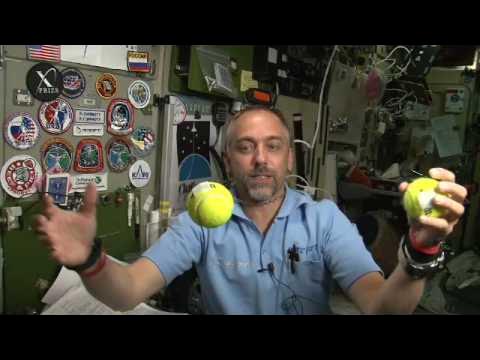Experiment: Verify the law of conservation of linear momentum.
Summary
TLDRIn this experiment, the law of conservation of momentum is verified using two spring trolleys. The process involves lubricating the trolleys' wheels to reduce friction, measuring their mass, and marking their initial positions on a frictionless surface. As the spring trolleys are released, they push away from each other, and the resulting displacements are recorded. The momentum calculations confirm that the total momentum remains nearly constant before and after the experiment, supporting the conservation of momentum principle. Errors such as friction and timing discrepancies are noted, with recommendations to improve accuracy by minimizing these issues.
Takeaways
- 😀 The aim of the experiment is to verify the law of conservation of momentum using spring-loaded trolleys on a friction-reduced surface.
- 😀 The apparatus used in the experiment includes two spring trolleys, a smooth runway, mass blocks, a meter stick, and oil for lubricating the wheels.
- 😀 The experiment involves releasing the trolleys using springs, which propel them apart, and measuring their displacement to observe momentum changes.
- 😀 The method includes measuring the masses of the trolleys and blocks, marking the initial position, and recording the displacements after release.
- 😀 Friction is reduced by lubricating the trolley wheels with oil, though it's acknowledged that the wheels will never be completely frictionless.
- 😀 The displacement values from each trial (in centimeters) were recorded, and positions were converted to meters for consistency in calculations.
- 😀 The law of conservation of momentum is tested by comparing the initial and final momentum values calculated using mass and displacement data.
- 😀 After performing the experiment, the displacement values for the trolleys are used to calculate the momentum of each trolley and check for conservation.
- 😀 The graph of mass and displacement shows a linear relationship, indicating that the total momentum is conserved as expected from the law.
- 😀 Possible experimental errors include friction on the surface, difficulty in stopping both trolleys at the same time, and inaccuracies in mass addition.
- 😀 To reduce errors, it is suggested to use a smoother runway, oil the wheels more effectively, and repeat the experiment multiple times with more participants.
Q & A
What is the aim of the experiment described in the script?
-The aim of the experiment is to verify the law of conservation of momentum experimentally.
What apparatus are used in the experiment?
-The apparatus includes two spring trolleys with frictionless wheels, a meter stick, a smooth runway, blocks with known masses, and oil to reduce friction.
Why is oil used in the experiment?
-Oil is used to lubricate the wheels of the trolleys, reducing friction to make the system as close to frictionless as possible.
What is the method of the experiment?
-The method involves measuring the masses of the trolleys and blocks, marking initial positions on the runway, releasing the spring to move the trolleys apart, measuring their final positions, and calculating momentum for each trolley.
How is momentum calculated in this experiment?
-Momentum is calculated by multiplying the mass of each trolley (M1, M2) by its respective displacement (X1, X2) to find the product of mass and displacement.
What is the significance of the graph of M1X1 versus M2X2?
-The graph helps visualize the relationship between the momentum of the two trolleys. The gradient of the graph should ideally be zero or close to zero, indicating that the total momentum is conserved.
What does the experiment demonstrate about the conservation of momentum?
-The experiment demonstrates that the total momentum of the system (sum of M1X1 and M2X2) remains close to zero before and after the trolleys are released, confirming the conservation of momentum.
What was the result of the final momentum calculation in the experiment?
-The final calculation showed that the total momentum was very close to zero, as expected, confirming the law of conservation of momentum.
What are some possible sources of experimental error in this experiment?
-Possible sources of error include friction in the wheels despite lubrication, inaccuracies in stopping the trolleys at the same time, and any imperfections in the smoothness of the runway.
How can errors be minimized in this experiment?
-Errors can be minimized by ensuring the runway is as smooth as possible, lubricating the wheels adequately, repeating the experiment multiple times, and involving more learners to ensure more accurate measurements.
Outlines

هذا القسم متوفر فقط للمشتركين. يرجى الترقية للوصول إلى هذه الميزة.
قم بالترقية الآنMindmap

هذا القسم متوفر فقط للمشتركين. يرجى الترقية للوصول إلى هذه الميزة.
قم بالترقية الآنKeywords

هذا القسم متوفر فقط للمشتركين. يرجى الترقية للوصول إلى هذه الميزة.
قم بالترقية الآنHighlights

هذا القسم متوفر فقط للمشتركين. يرجى الترقية للوصول إلى هذه الميزة.
قم بالترقية الآنTranscripts

هذا القسم متوفر فقط للمشتركين. يرجى الترقية للوصول إلى هذه الميزة.
قم بالترقية الآنتصفح المزيد من مقاطع الفيديو ذات الصلة

NECT Gr 12 Conservation of Linear Momentum

Fisika SMA - Impuls & Momentum (3) - Hukum Kekekalan Momentum (I)

FISIKA KELAS X | MOMENTUM, IMPULS, dan TUMBUKAN (PART 2) - Hukum Kekekalan Momentum

Conservation of Momentum | Elastic and Inelastic Collision | Grade 9 Science Quarter 4 Week 4

Impulse and Momentum

Richard Garriott Space Video Blog: Conservation of Momentum
5.0 / 5 (0 votes)
